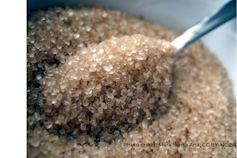I remember a decade ago sitting in front of my 9-month-old daughter, who was in her high chair, and trying to spoon-feed her a pureed green vegetable. It didn’t matter if it was peas, green beans or something else, because the outcome was the same: I spooned it into her mouth, and it came right back out.
Compare this with feeding her applesauce, for which she would open her mouth after each bite and almost bounce in her chair with pleasure. I nearly danced along with her. This was easier! Let’s just keep doing this! But as a nutritional epidemiologist, I knew that solely satisfying her desire for sweetness would not benefit her health in the long run.
At the University of Pittsburgh Graduate School of Public Health, I study the consequences of poor nutrition on the health of mothers and children. I recently served on a National Academies of Science, Engineering and Medicine committee that summarized guidelines on feeding infants and children up to age 2. As part of the committee, I helped to write a report about feeding young children added sugars and sugar-sweetened beverages. And – spoiler alert! – experts advise no added sugar for infants and little to no added sugar for children 12 to 24 months old.
Added sugars are sugars and syrups that are added to foods during processing or preparation or later at the table. They can be natural sugars, like honey, or artificial sweeteners, like high-fructose corn syrup. Yogurt, baby snacks, fruit drinks, desserts and sweet bakery products are the most common sources of added sugars in the diets of infants and toddlers.

Unlike sugars that naturally occur in fruits, dairy products, vegetables and bread and other grains, natural sugars and artificial sweeteners added to foods are the ones we should eliminate or limit in the diets of young children. But why?
From birth to 24 months, proper growth and development require calories and nutrients. Foods and beverages high in added sugars provide a lot of calories – referred to as “empty calories” – but not a lot of nutrients. Offering foods with added sugars to children from birth to 24 months is problematic because they eat relatively small amounts of food at this stage. To ensure healthy nutrition, the food they eat must be high in nutrients. If young kids fill up on high-calorie, sugar-laden foods or drinks, it leaves less room for nutritious foods.
Children who are fed diets high in added sugars are more likely than children with lower sugar intakes to have a number of negative health consequences as they develop, including childhood obesity, cardiovascular disease and tooth decay.
Diet from birth to 24 months also shapes long-term food preferences. People are hard-wired to crave sugar because it built up fat stores and kept our ancestors from starving when food was scarce. But kids can learn to accept bitter foods high in nutrients, like vegetables, if they are offered them repeatedly in early childhood. Setting healthy diet patterns early in life can help children maintain a healthy weight and avoid chronic disease.

Considering that about 85% of infants and toddlers in the U.S. consume added sugar daily, here are some practical tips for parents and caregivers of babies and young children for eliminating or limiting their sugar consumption:
1. Look on the food label
Check the amount of added sugars on the nutrition facts label on foods and drinks before you buy them. Labels include the amount of “Total Sugars” and, below that, the amount of “Added Sugars.” One 8-ounce serving of chocolate milk contains 15 grams of added sugar, for example, while regular cow’s milk has no added sugar.
2. Switch to healthier drinks
Swap out sugary drinks with water or milk (breast milk, formula or other milk, depending on the child’s age). Eliminate or limit sugary beverages like regular soda, flavored milks, Kool-Aid, fruit drinks, juice with less than 100% fruit, sports drinks, energy drinks and sweetened water or tea.
3. Ditch sugar during food prep
Prepare foods for your young child at home without adding sugar.
4. Be aware of the different names for sugar
Some packaged foods literally have “sweetened” in their name, such as sweetened applesauces or sweetened peaches. But sugar is not always so easy to spot. Often foods we don’t expect to contain added sugars do, like yogurts. Added sugars go by many different names, such as high-fructose corn syrup, fruit juice concentrates, cane sugar, corn sweetener, lactose, glucose, sucrose and maple syrup. So always check the ingredient list.
5. Be mindful of sugar lurking in packaged or store-made foods
If you offer your child packaged or store-prepared foods and beverages, such as dry cereal, fruit pouches or jars of baby food, they should contain little to no added sugars.
6. Try again and often
Offer children bitter foods like vegetables over and over. Young children need to be exposed to foods 30 or so times before they learn to like them!
[Over 140,000 readers rely on The Conversation’s newsletters to understand the world. Sign up today.]
As a registered dietitian and licensed nutritionist who has counseled families – but also as a mother to three children – I have learned that reducing added sugar is not as easy as we professionals often make it seem. In fact, it may be infeasible for many people because of limited access to or the higher price of healthy foods. Some people have pressing needs that may take priority over a healthful diet. And fast-food restaurants and convenience stores seem to be everywhere you look.
So don’t try to make all of these changes with your child at once. Choose one that seems most feasible, and try that first. Gradually add another. Remember that falling off a healthy habit is normal. The important thing is getting back on the horse and trying again.

This article is part of a series examining sugar’s effects on human health and culture. You can read the articles on theconversation.com.

